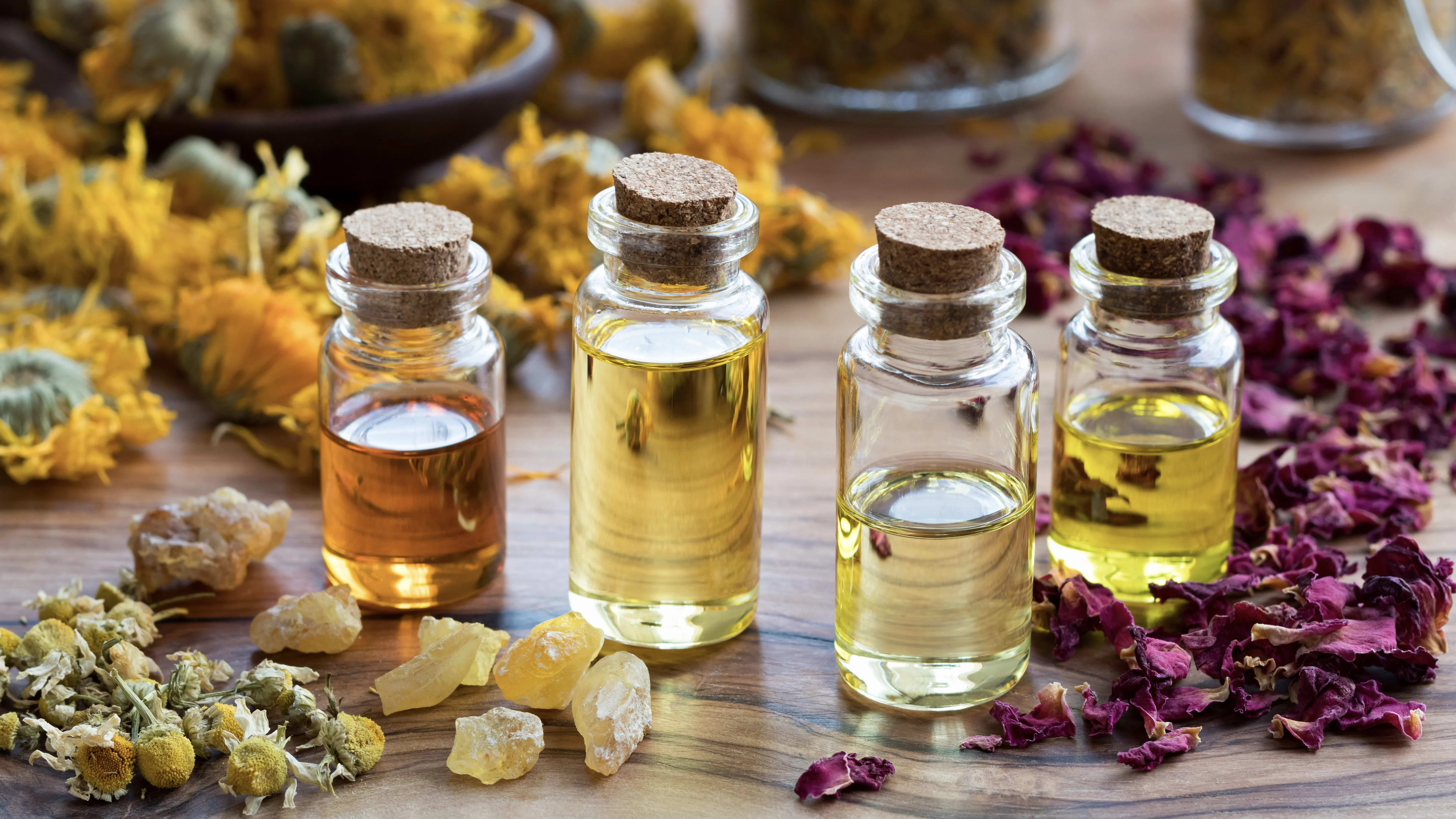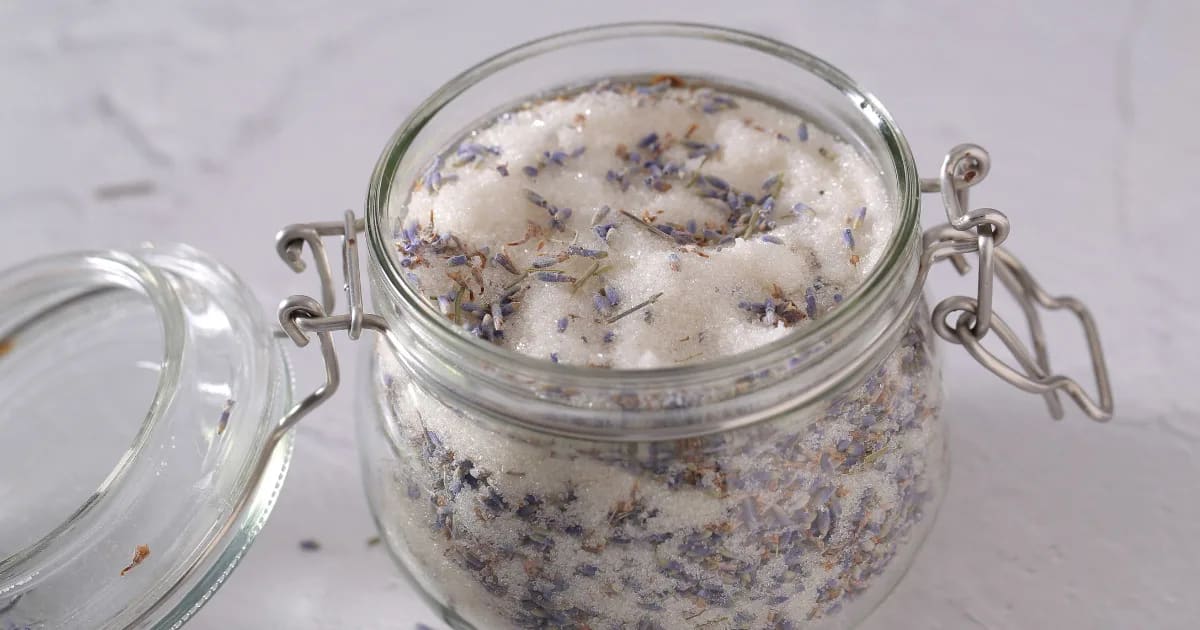Back to School Health: Aromatherapy Tips for a Strong, Stress-Free School Year

Back to School Health for the Whole Family
As school starts, many families feel a mix of emotions, excitement, nervous energy, and maybe even a little overwhelm. Whether you’re sending your first kindergartner off with a backpack half their size or juggling multiple kids' school supplies and extracurricular activities, the new school year brings a major shift in routine.
As joyful as fresh starts can be, transitions are hard. For both children and parents, the change in pace, schedule, and sleep can stress the immune system, interrupt healthy habits, and challenge mental health. Even good stress is still stress, and our bodies feel it.
Thoughtful planning and gentle tools like aromatherapy can support us through the transition.
This guide is here to help you support your family’s overall health during the back-to-school season with simple, natural routines. We’ll share recipes for:
Boosting immunity & preventing infection
Tea Tree Immune Boosting Diffuser Blend
Aloe & Lemon Verbena Purifying Hand Gel
Cold & Flu Inhaler
Calming anxiety & supporting mental health
“Brave Kid” Inhaler for Separation Anxiety
After-School Grounding Roll-On
Parent Burnout Roller
Improving focus & energy
Focus Lotion with Peppermint & Rosemary
Homework Helper Diffuser Blend
Screen Relief with Black Spruce
Creating consistent rhythms at home
Goodnight Room Spray
Morning Motivation Shower Steamers
Sunday Night School Prep Diffuser Blend
More ways aromatherapy blends serve as school supplies
English Thyme Backpack & Gym Bag Freshener
Hair & Hat Spray for Lice Prevention
Happy Belly Inhaler for Digestion
“Calm Down” Orange Mist
Every recipe is grounded in the healing power of essential oils and backed by wellness wisdom. We’ll also mention when to lean on primary care, your child’s pediatrician, or school health staff for additional support.
Let’s help you and your child start the year feeling confident, calm, and cared for.
Immune Support for a Healthy School Year

Our bodies and minds interpret any change in routine as stress. Even if the change is positive, adjusting to a new normal can be a challenge. The body struggles to adapt to a new sleep schedule, different activities, and perhaps different eating habits.
That’s often enough stress for our bodies to manifest illness. When we add in exposure to big groups of new people, shared supplies, and group activities, it’s no surprise the school year often brings a spike in illnesses. Colds, the flu, and stomach bugs are common. This is especially true for younger children.
A lot of the recipes I’ll share throughout this post can support immune health (like those designed to help us get healthy sleep). But the following three are specifically geared toward boosting our immune response and preventing infection. Along with a few healthy habits (like good sleep, healthy eating, physical activity, and regular hydration), they can serve as prevention strategies that help your family stay well.
Our goal is to reduce exposure to germs, boost our defenses, and implement some quick responses if we do start sniffling. (See our deep dive into supporting immunity with essential oils here.)
Tea Tree Immune-Boosting Diffuser Blend
This is a grounding and uplifting diffuser blend to help support wellness during the school year. Great for mornings or after school!
Tea tree, lemon, and thyme ct thymol oil contain components that can boost white blood cell activity, modulate your immune response, and fight a wide variety of germs (Budhiraja et al. 1099; Lappas & Lappas, 2012; Gholijana & Amirghofran, 2016; Kowalczyk et al. 2020). Tea tree, especially, is known as an excellent airborne antimicrobial (Carson, Hammer & Riley, 2006).
Ingredients
4 drops Tea Tree Oil (Melaleuca alternifolia)
3 drops Lemon Oil (Citrus limon)
2 drops Thyme ct thymol Oil (Thymus vulgaris ct thymol)
Directions
Add the essential oils to your diffuser. Diffuse in shared spaces like the kitchen or living room while prepping for the day or during afternoon downtime.
If you love cinnamon, try the Cinnamon Strong Immune Health diffuser recipe in this post!
Aloe & Lemon Verbena Purifying Hand Gel
This hand gel recipe is a classic from our archives! It’s made with pure aloe vera gel, lemon verbena hydrosol, and essential oils that support immune health while fighting microbes. There’s even a kid-friendly version for children between ages 5–10. (For kids younger than 5, we prefer to use pure hydrosol without essential oils.)
Cold & Flu Inhaler (For Active Infections)
A stronger, immune-supportive blend for older kids and parents to use when you come down with something. This one includes essential oils that promote clearer breathing, break up mucus, calm inflammation, soothe an achy head, and fight infection (Carson, Hammer & Riley, 2006; Silva et al. 2003; Mahumane et al. 2016; Kehrl, Sonnemann & Dethlefsen, 2004).
You’ll need a blank inhaler.
Ingredients
10 drops Cedarwood Oil (Juniper virginiana)
3 drops Eucalyptus Oil (Eucalyptus globulus)
2 drops Tea Tree Oil (Melaleuca alternifolia)
Directions
Add oils to the cotton (or polyester) wick and insert it into the inhaler. Inhale deeply through the nose several times per day. Check this post for a detailed walk-through on how to make an aromatherapy inhaler.
A chest rub can also offer a lot of relief, helping to break up mucus, support immune health, and even soothe a sore throat. Try this Eucalyptus Chest Rub recipe.
Safety Note: We like to avoid using eucalyptus for children younger than 10 years old.
For kids between 5–10, adjust the essential oils in this inhaler:
4 drops Cedarwood Oil (Juniper virginiana)
1 drop Tea Tree Oil (Melaleuca alternifolia)
Most kids like the scent of cedarwood oil. However, you can also use lemon (Citrus limon) or sweet orange (Citrus sinensis) for them.
This is a water-based recipe made with no preservatives. We recommend storing it in a cool place and making a fresh bottle every few weeks.
Emotional Wellness & Mental Health for Kids and Parents

The new year can come with a wave of anxiety, especially for younger students (and even parents). From changing routines to new environments, it’s common for families to feel emotionally stretched when school starts. Prioritizing mental health is just as important as physical health, and building emotional resilience starts with a supportive routine, healthy habits, and a nurturing environment at home and at school.
Anxious thoughts and behavior often show up during transitions, particularly in the first few weeks of the school year.
Signs of emotional strain can include:
Trouble sleeping or clinging at drop-off.
Headaches or stomach aches.
Resistance to extracurricular activities.
Mood swings or quiet withdrawal.
Simple aromatherapy tools can create a sense of safety and ease the day-to-day jitters. These recipes give you a starting point. If you struggle with anxiety on a day to day basis, check out our Ultimate Guide on Using Essential Oils for Anxiety.
“Brave Kid” Inhaler for Separation Anxiety
Designed for younger children dealing with back-to-school nerves, transitions, or drop-off anxiety. This recipe keeps it simple, with aromas that kids can easily recognize. I suggest choosing either lavender or sweet orange oil (whichever your child likes best). Both have been shown to calm anxiety and boost the mood (Lima et al. 2012). Lavender has even performed as well as prescription anxiety medications (Woelk & Schläfke, 2010).
This recipe is pocket-sized, easy-to-use, and empowering! It encourages kids to take deep slow breaths, which goes a long way to helping them calm down. When we add essential oils, we’re giving them an extra layer of care.
You’ll need a blank aromatherapy inhaler.
Ingredients
5 drops Lavender Oil (Lavandula angustifolia)
OR
5 drops Sweet Orange Oil (Citrus sinensis)
Directions
Add oils to the cotton (or polyester) wick and insert it into the inhaler. Inhale deeply through the nose several times per day.
Let your child hold and use as needed for a few deep breaths before or during school day transitions.
We have a comprehensive collection of inhaler blends for back-to-school here.
After-School Grounding Roll-On
Help kids and parents reset after a busy, overstimulating day. Perfect for family reconnect time, screen-free play, or pre-dinner winding down. The essential oils in this blend help calm and regulate the nervous system (Battaglia, 2018; Woelk & Schläfke, 2010), while calming inflammation and boosting immunity (Peana et al. 2022; Siddiqui, 2011).
You’ll need a 10 ml roll-on bottle for this blend.
Ingredients
10 ml Vanilla Infused Jojoba Oil (Simmondsia chinensis)
1 drop Lavender Oil (Lavandula angustifolia)
1 drop Frankincense Oil (Boswellia sacra)
1 drop Vetiver Oil (Chrysopogon zizaoides)
Directions
Combine the ingredients in your 10 ml roller bottle. Snap the roller ball top into place and shake the blend gently to combine. Apply as needed to wrists, pulse points, neck, and wherever you like.
This blend is designed for kids younger than 10. For older kids and adults, use 2 drops of each oil.
Optional Hydrosol Twist
Instead of making a roll-on, blend the oils into 1 oz (30 ml) Geranium Hydrosol and use as a calming room spray. Since we’re using a full 1 oz (30 ml) of carrier here, you can raise the essential oil drops to 2 each. Be sure to include 1 ml of Solubol dispersant to keep the essential oils dispersed through the hydrosol. There are no preservatives in this version of the recipe, so store it in the fridge to prolong its shelf life and make a fresh bottle every few weeks.
Parent Burnout Roller: Natural Stress Relief
For grownups carrying the mental load of school schedules, lunches, and late-night worry spirals. A moment of calm in your pocket.
St. John’s wort is the perfect carrier for this blend, known for its mentally, emotionally uplifting effects (Cui & Zheng, 2016). The essential oils soothe the nervous system, while helping clear up brain fog and fatigue (Woelk & Schläfke, 2010; Awadh et al. 2009; Perry & Perry, 2006). (If you struggle with heavier emotions such as depression, you may find blending inspiration in this post.)
Ingredients
10 ml St. John’s Wort Infused Oil (Hypericum perforatum)
3 drops Bergamot Mint Oil (Mentha citrata)
2 drops Frankincense Oil (Boswellia carterii)
1 drops Geranium (Pelargonium graveolens var roseum)
Directions
Combine the ingredients in your 10 ml roller bottle. Snap the roller ball top into place and shake the blend gently to combine. Apply as needed to wrists, pulse points, neck, and wherever you like.
Safety Note: Be sure not to confuse bergamot mint (Mentha citrata) with the citrus oil bergamot (Citrus bergamia). Bergamot oil is strongly phototoxic, and may cause skin reactions in sunlight. Learn more about that here.
Boosting Focus & Energy

Staying focused on our work can be a real challenge, even for adults. Children can find it even more difficult. These days, many children are exposed to a lot of screen time from an early age. In 2022, a systematic review (wherein researchers review a large number of studies about a specific topic) found that “exposure to excessive screen time in children can be associated with attention problems” (Santos et al. 2022).
Other issues that can affect our focus and concentration include stress, poor sleep, changing routines, and feeling emotionally vulnerable (all common issues that pop up around back-to-school season).
Children (and adults) focus better with the right foundation: consistent sleep, nourishing meals, plenty of physical activity, and emotional balance. Simple lifestyle adjustments, like a tech-free morning routine or adding healthy snacks to the backpack, can make a big difference.
When that foundation is in place, aromatherapy can be a powerful support tool. These recipes help with clarity, alertness, and emotional regulation, especially when paired with intentional breathing or mindful movement. Even the act of using an essential oil blend creates the opportunity to be present and mindful for a few moments. You can learn more in our post Essential Oils for Focus: 6 Ways to Boost Productivity.
Focus Lotion with Peppermint & Rosemary
For a midday mental boost, this blend is great for homework, test prep, or post-lunch brain fog. It’s made in a base of natural, unscented lotion, which absorbs quickly and keeps your skin healthy and moisturized. These oils have been shown to positively affect mood, lift fatigue, and sharpen alertness and mental performance (Han et al. 2018; Moss et al. 2009; Diego et al. 1998).
You’ll need a 2 oz (56 gm) jar for this blend.
Ingredients
2 oz (56 gm) Natural Unscented Lotion
9 drops Lemon Oil (Citrus limon)
7 drops Peppermint Oil (Mentha × piperita)
7 drops Rosemary ct 1,8-Cineole Oil (Salvia rosmarinus ct 1,8-cineole)
Directions
Add the lotion and essential oils to the 2 oz (56 jar). Stir gently with a glass stir rod. It may take a moment for the essential oils to blend into the lotion, but they will blend!
Safety Notes: The number of drops of lemon oil in this blend is safe, and not phototoxic. If you’re going to adjust the drop count, be sure not to use more than 12 drops of lemon per 1 oz (28 gm) of lotion.
For children between 5–10 years old, use the following blend in 2 oz (56 gm) of lotion:
5 drops Lemon Oil (Citrus limon)
5 drops Lavender Oil (Lavandula angustifolia)
Homework Helper Diffuser Blend
This recipe comes from our post Essential Oils for Focus: 6 Ways to Boost Productivity. There, it’s titled the Rosemary Cypress Diffuser Blend. But it works as a Homework Helper, too!
Ingredients
3 drops Cypress Oil (Cupressus sempervirens)
3 drops Rosemary Oil (Salvia rosmarinus ct 1,8-cineole)
2 drops Sweet Basil Oil (Ocimum basilicum ct linalool)
Directions
Diffuse after school, during after-school work, or while reviewing materials before bed.
Screen Fatigue Relief with Black Spruce
This one offers support for tired eyes, tension, and sensory overload from too much screen time. Black spruce oil (Picea mariana) contains bornyl acetate, which has been shown to ease the stress of working at a screen for long hours, without reducing alertness.
Follow this link for our popular recipe, Black Spruce Bedtime Body Scrub. You can leave the pink Himalayan salt out of that recipe to make Black Spruce Body Oil. While the recipe is relaxing enough to help you sleep, it won’t put you to sleep. You can use it any time throughout the day to ease the strain of screentime without getting sleepy!
Healthy Routines at Home for Overall Health

Behind every thriving student is a rhythm that supports their complete wellness. From sunrise to bedtime, consistent routines help children (and adults) feel safe, centered, and better able to handle the demands of the school year.
A routine actually creates space in our schedule. It provides a sense of safety and confidence that we can handle what’s coming. It allows us to plan for (and naturally perform) healthy habits: waking up at the same time each day, getting rest and physical activity, eating a healthy meal,
These recipes help us create that structure.
Goodnight Room Spray
Use this relaxing room spray as part of a regular bedtime routine. The essential oils in this room spray are deeply reassuring and soothing, helping the nervous system calm down after a day full of stimulation and assignments (which your mind might still be cycling over as you lay in bed, especially if they’re not complete) (Woelk & Schläfke, 2010; Awadh et al. 2009; Kagawa et al. 2003).
This one is a healthy habit for kids and adults alike. You can even leave it on kids’ nightstands for them to use if they wake up at night.
Make this recipe in a 2 oz (60 ml) PET or glass spray bottle.
Ingredients
1 fl oz (30 ml) Geranium Hydrosol (Pelargonium spp)
Nearly 1 fl oz (30 ml) distilled water
5 ml Solubol dispersant
14 drops Lavender Oil (Lavandula angustifolia)
8 drops Frankincense Oil (Boswellia carterii)
6 drops Cedarwood Oil (Juniperus virginiana)
Directions
Combine all ingredients and shake well before each use. Mist onto pillows, blankets, or into the air 10 minutes before bed.
This is a water-based recipe made with no preservatives. We recommend storing it in a cool place and making a fresh bottle every few weeks.
I love linen & room spray recipes! Here’s a beautiful one with cedarwood and vetiver, and here’s a luxurious blend with neroli oil.
Morning Motivation Shower Steamers
These sweet little DIY “cakes” are great for sleepy kids (or adults!) who need a jump-start on school mornings! They’re made of baking soda and water, which are blended up and allowed to dry in a fun silicone mold. When you place one of these on the shower floor, the water will dissolve it and release the essential oil’s aroma into the steamy air. So refreshing! It’s fun to make these with kids.
You can use any essential oils that you like. I prefer brisk, penetrating oils like peppermint (Mentha × piperita) that will awaken my senses. If you’re making them for kids, try sweet orange (Citrus sinensis).
Find the recipe here on our blog.
Sunday Night School Prep Diffuser Blend
This is a gentle blend to help everyone mentally shift from weekend mode to school week mindset. It encourages clarity, calm, and connection as one week ends and another begins.
Ingredients
4 drop Black Spruce Oil (Picea mariana)
3 drops Lemon Oil (Citrus limon)
2 drops Lavender Oil (Lavandula angustifolia)
Directions
Diffuse while prepping lunches, reviewing the calendar, or laying out clothes.
Additional Blends for School Wellness

These extra recipes are a few more ways to help your child stay healthy and comfortable throughout the school year. There are a few recipes here it’s best to keep at home and use as needed, and a few that your child can carry with them in their backpack or pocket.
English Thyme Backpack & Gym Bag Freshener
A natural purifying spray for musty backpacks and sweaty gym bags! The essential oils help fight microbes, including a variety of bacteria, viruses, and fungi (Carson, Hammer & Riley, 2006; Lang & Buchbauer, 2012). I’ve also included Solubol in this recipe because, while it’s not designed to be sprayed on the skin, there’s the possibility that it may make skin contact. Solubol keeps it safe for skin application.
You can spritz your child’s backpack and gym bag with this blend every few days to keep things fresh.
You’ll need a 2 oz (60 ml) glass or PET spray bottle.
Ingredients
1 fl oz (30 ml) English Thyme Hydrosol
1 fl oz (30 ml) distilled water
5 ml Solubol dispersant
15 drops Lemon Oil (Citrus limon)
15 drops Tea Tree Oil (Melaleuca alternifolia)
Directions
Combine all ingredients and shake before use. Shake well before use.
This is a water-based recipe made with no preservatives. We recommend storing it in a cool place and making a fresh bottle every few weeks.
Hair & Hat Spray for Lice Prevention
Formulated with oils known to deter lice, this spritz is safe for use on hats, hoods, scarves, and hair (Di Campli et al. 2012; Candy, Akhoundi & Izri, 2020). Rather than using this blend every day, I suggest waiting until you’re aware of a head lice outbreak. It can work well as a preventive measure.
Make this blend in a 2 oz (60 ml) glass or PET spray bottle.
Ingredients
1 fl oz (30 ml) Geranium Hydrosol (Pelargonium spp)
Nearly 1 fl oz (30 ml) distilled water
5 ml Solubol dispersant
20 drops Tea Tree Oil (Melaleuca alternifolia)
6 drops Lavender Oil (Lavandula angustifolia)
2 drops Eucalyptus Oil (Eucalyptus globulus)
Directions
Shake before use. Lightly mist hair, coat collars, hats, and backpacks before heading out. Adds a gentle floral scent kids don’t mind.
Safety Notes: Leave out the eucalyptus for children younger than 10.
This is a water-based recipe made with no preservatives. We recommend storing it in a cool place and making a fresh bottle every few weeks.
Happy Belly Inhaler for Digestion
Challenging tests, separation anxiety, new people, and the daily stress of school has led many a child to the school nurse with complaints of an upset stomach (as has sometimes unhealthy cafeteria food). This popular inhaler recipe from our blog is made with essential oils that soothe nausea, calm spasms, and even ease anxiety (Roman chamomile) and boost confidence (ginger). Kids can carry it in their backpack or pocket and use it as needed.
Find the Happy Belly Inhaler for Digestion here!
“Calm Down” Orange Mist
This is a simple hydrosol mist that kids can safely use when they feel stressed or nervous. It’s safe for skin application, and even safe for ingestion. It’s simply blood orange hydrosol (Citrus sinensis) in a 2 oz (60 ml) PET plastic spray bottle. Children love the warm, bright, familiar aroma, and it gives them an empowering way to calm themselves down if they get overwhelmed.
When to See the Doctor: Aromatherapy + Traditional Care
As an RN, I know that while essential oils are powerful, they’re one piece of the larger picture when it comes to your child’s health. Knowing when to use aromatherapy and when to call your child’s pediatrician is key to keeping your family well. We’re suggesting these natural recipes as a complement to medical care, not a substitute. While some essential oils do have antibacterial properties, they shouldn’t be used in place of antibiotics during an acute infection. Likewise, some oils can help sharpen our focus and attention, but may not be enough if your child has ADHD. And our intuition can tell us a great deal, but diagnostic testing can offer profound insights to how we care for our loved ones.
If your child does develop an infection, be sure to contact your pediatrician, family medicine practitioner, or urgent care provider. It’s also important to schedule annual wellness exams and school physicals before each new school year begins.
Most schools require up-to-date vaccinations and a current physical before enrollment. If you’re curious about the current recommendations, look to the American Academy of Pediatrics, which provides science-backed recommendations on school health, immunizations, and family wellness.
Finding the Right Balance
The best approach for our school aged child combines modern medicine, everyday wellness tips, and natural tools like aromatherapy. When we’re proactive about care and willing to ask for help when needed, we model confidence, clarity, and good health.
When used thoughtfully alongside traditional care, essential oils can help us nurture healthy children and families.
My Takeaway
The back-to-school season is a full-body, full-family shift. New schedules, new environments, and new emotional landscapes arrive all at once, and even the most joyful transitions can stir up waves of stress, fatigue, and growing pains.
Aromatherapy gives us a way to breathe through it. To pause. To anchor our mornings, soften our evenings, and meet our children, and ourselves, with calm and intention.
Here’s to a healthy school year, where our kids thrive not because we did everything perfectly, but because we showed up with heart, with presence, and with tools that truly support the journey.
REFERENCES
Awadh Ali, N.A., Wurster, M., Arnold, N., Lindequist, U. and Wessjohan, L. (2009) Chemical composition and biological activities of essential oils from the oleogum resins of three endemic Soqotraen Boswellia species. Records of Natural Products 2, 1, 6-12.
Battaglia, S. (2018) The Complete Guide to Aromatherapy (Third Edition) Vol I: Foundations & Materia Medica. Zillmere, QLD, Australia. Black Pepper Creative Party, Ltd.
Budhiraja SS, Cullum ME, Sioutis SS, Evangelista L, Habanova ST. (1999) Biological activity of Melaleuca alternifola (Tea Tree) oil component, terpinen-4-ol, in human myelocytic cell line HL-60. Journal of Manipulative and Physiological Therapeutics. 1999 Sep;22(7):447-53. doi: 10.1016/s0161-4754(99)70033-3. PMID: 10519561.
Candy, K., Akhoundi, M., & Izri, A. (2020). Pediculicidal activity assessment of four essential oil terpenoids using filter contact and immersion bioassays. Tropical parasitology, 10(2), 165–167. https://doi.org/10.4103/tp.TP_41_19
Carson, C. F., Hammer, K. A., & Riley, T. V. (2006). Melaleuca alternifolia (tea tree) oil: a review of antimicrobial and other medicinal properties. Clinical microbiology reviews, 19(1), 50-62.
Corrêa, A. N. R., Weimer, P., Rossi, R. C., Hoffmann, J. F., Koester, L. S., Suyenaga, E. S., & Ferreira, C. D. (2023). Lime and orange essential oils and d-limonene as a potential COVID-19 inhibitor: Computational, in chemico, and cytotoxicity analysis. Food bioscience, 51, 102348. https://doi.org/10.1016/j.fbio.2022.102348
Cui, Y., Zheng, Y. (2016) A meta-analysis on the efficacy and safety of St. John’s wort extract in depression therapy in comparison with selective serotonin reuptake inhibitors in adults. Neuropsychiatric Disease and Treatment 12: 1715–1723 doi: 10.2147/NDT.S106752
Di Campli, E., Di Bartolomeo, S., Delli Pizzi, P., Di Giulio, M., Grande, R., Nostro, A., & Cellini, L. (2012). Activity of tea tree oil and nerolidol alone or in combination against Pediculus capitis (head lice) and its eggs. Parasitology research, 111(5), 1985–1992. https://doi.org/10.1007/s00436-012-3045-0
Diego, M. A., Jones, N. A., Field, T., Hernandez-Reif, M., Schanberg, S., Kuhn, C., McAdam, V., Galamaga, R., & Galamaga, M. (1998). Aromatherapy positively affects mood, EEG patterns of alertness and math computations. The International journal of neuroscience, 96(3-4), 217–224. https://doi.org/10.3109/00207459808986469
Gholijani, N., & Amirghofran, Z. (2016). Effects of thymol and carvacrol on T-helper cell subset cytokines and their main transcription factors in ovalbumin-immunized mice. Journal of immunotoxicology, 13(5), 729–737. https://doi.org/10.3109/1547691X.2016.1173134
Han C, Li F, Tian S, Liu Y, Xiao H, Wu X, Zhang W, Zhang W, Mao M. Beneficial effect of compound essential oil inhalation on central fatigue. (2018). BMC Complement Altern Med. 18(1):309. doi: 10.1186/s12906-018-2375-6. PMID: 30477490; PMCID: PMC6260882.
Kagawa D, Jokura H, Ochiai R, Tokimitsu I, Tsubone H (2003) The sedative effects and mechanism of action of cedrol inhalation with behavioural pharmacological evaluation. Planta Medica 69: 637-641 https://doi.org/10.1055/s-2003-41114
Kehrl, W., Sonnemann, U., & Dethlefsen, U. (2004). Therapy for Acute Nonpurulent Rhinosinusitis With Cineole: Results of a Double‐Blind, Randomized, Placebo‐Controlled Trial. The Laryngoscope, 114(4), 738-742.
Kowalczyk, A., Przychodna, M., Sopata, S., Bodalska, A., & Fecka, I. (2020). Thymol and Thyme Essential Oil-New Insights into Selected Therapeutic Applications. Molecules (Basel, Switzerland), 25(18), 4125. https://doi.org/10.3390/molecules25184125
Lang, G. and Buchbauer, G. (2012) A review on recent research results (2008-2010) on essential oils as antimicrobials and antifungals. A review. Flavour and Fragrance Journal 27, 13-39.
Lappas, C. M., & Lappas, N. T. (2012). D-Limonene modulates T lymphocyte activity and viability. Cellular immunology, 279(1), 30–41. https://doi.org/10.1016/j.cellimm.2012.09.002
Li, Q., Nakadai, A., Matsushima, H., Miyazaki, Y., Krensky, A. M., Kawada, T., & Morimoto, K. (2006). Phytoncides (wood essential oils) induce human natural killer cell activity. Immunopharmacology and immunotoxicology, 28(2), 319-333. https://doi.org/10.1080/08923970600809439
Lima, N.G., de Souza, D.P., Pimenta, F.C., Alves, M.F., de Souza, F.S., (2012) Anxiolytic-like activity and GC-MS analysis of (R)-(+)-limonene fragrance, a natural compound found in foods and plants. Pharmacology, Biochemistry and Behavior 103, 450-454.
Mahumane, G. D., van Vuuren, S. F., Kamatou, G., Sandasi, M., & Viljoen, A. M. (2016). Chemical composition and antimicrobial activity of Eucalyptus radiata leaf essential oil, sampled over a year. Journal of Essential Oil Research, 1-14.
Moss, M., Hewitt, S., Moss, L., & Wesnes, K. (2009). Modulation of cognitive performance and mood by aromas of peppermint and ylang-ylang. The International journal of neuroscience, 118(1), 59–77. https://doi.org/10.1080/00207450601042094
Peana, A.T., D’Aquila, P.S., Panin, F., Serra, G., Pippia, P. and Moretti, M.D. (2002) Anti-inflammatory activity of linalool and linalyl acetate constituents of essential oils. Phytomedicine 9, 721-726.
Perry, N. and Perry, E. (2006) Aromatherapy in the management of psychiatric disorders: clinical and neuropharmacological perspectives. CNS Drugs 20, 4, 257-280
Santos, R. M. S., Mendes, C. G., Marques Miranda, D., & Romano-Silva, M. A. (2022). The Association between Screen Time and Attention in Children: A Systematic Review. Developmental neuropsychology, 47(4), 175–192. https://doi.org/10.1080/87565641.2022.2064863
Siddiqui M. Z. (2011). Boswellia serrata, a potential antiinflammatory agent: an overview. Indian journal of pharmaceutical sciences, 73(3), 255–261. https://doi.org/10.4103/0250-474X.93507
Silva, J., Abebe, W., Sousa, S.M., Duarte, V.G., Machado, M.I.L. and Matos, F.J.A. (2003) Analgesic and anti-inflammatory effects of essential oils of eucalyptus. Journal of Ethnopharmacology 89, 277-83.
Woelk, H. and Schläfke, S. (2010) A multi-center, double-blind, randomised study of the Lavender oil preparation Silexan in comparison to Lorazepam for generalized anxiety disorder. Phytomedicine 17, 2, 94-99





